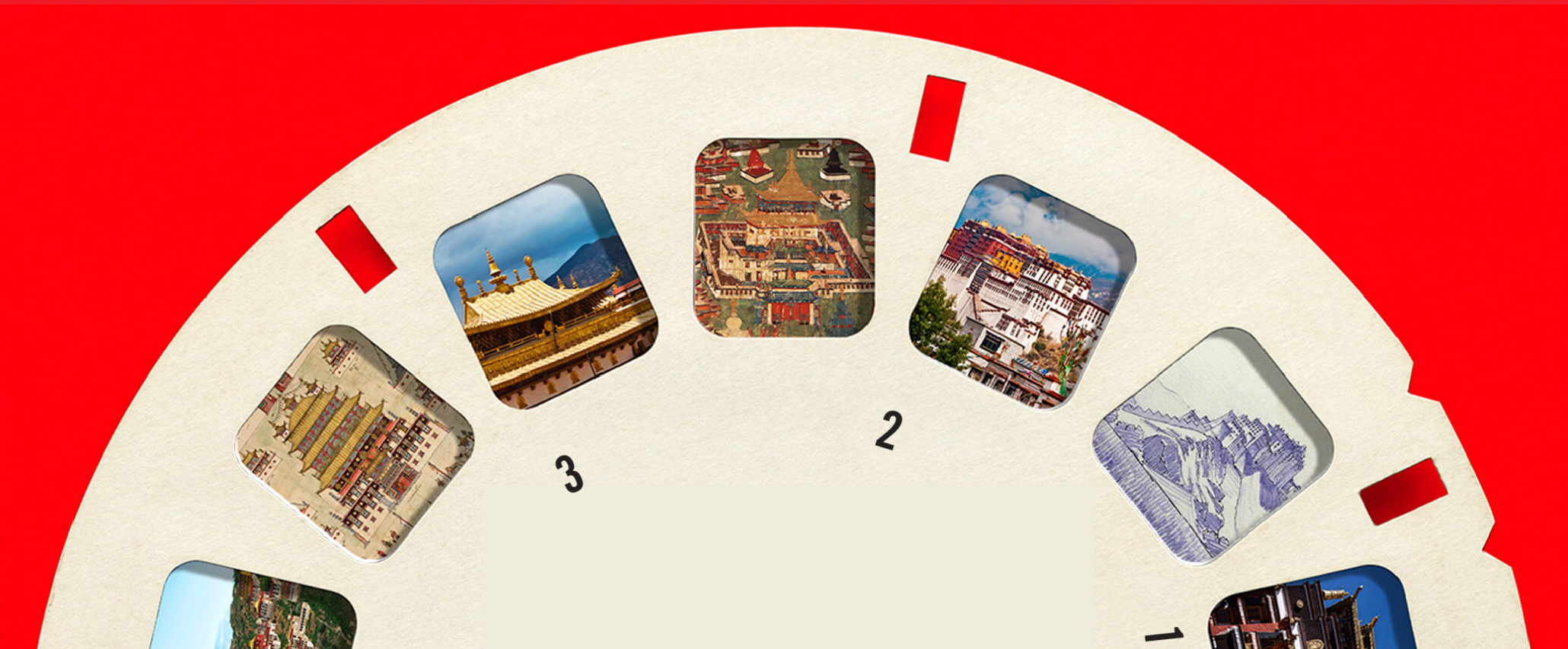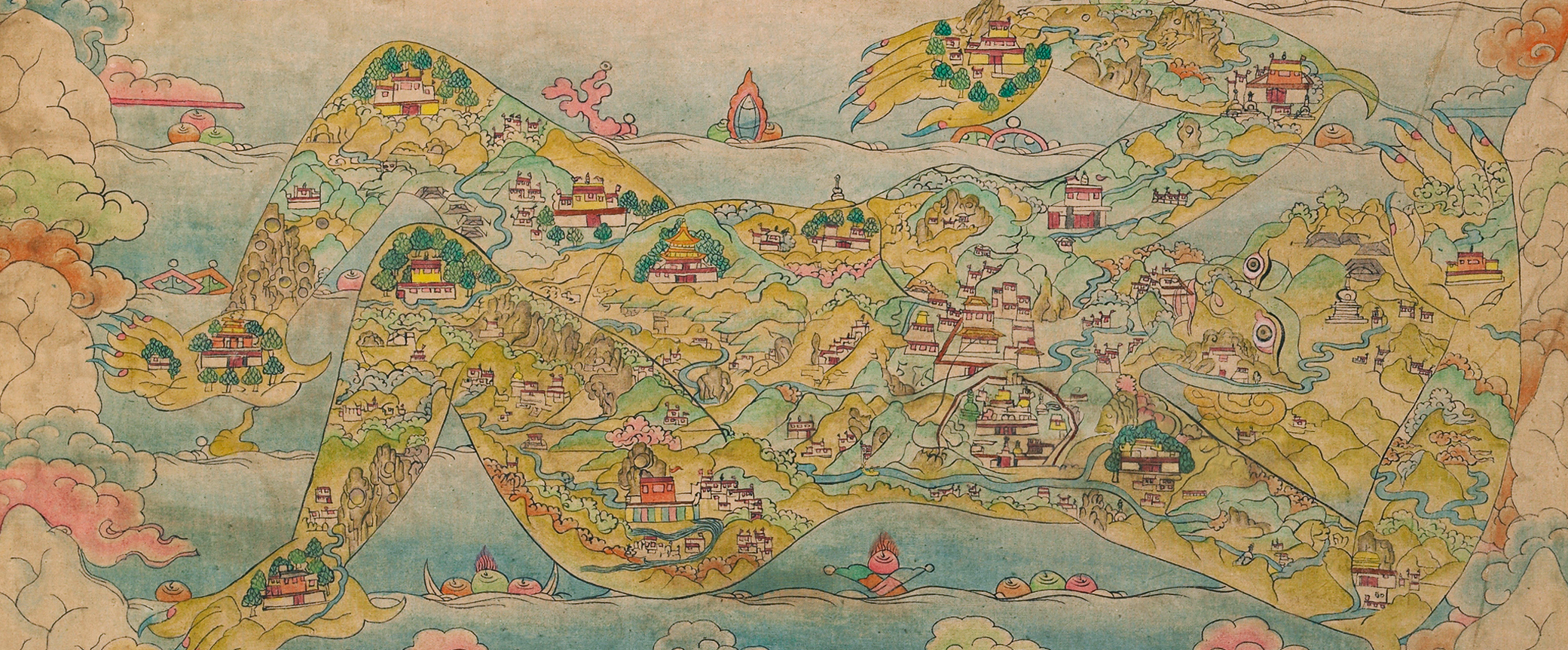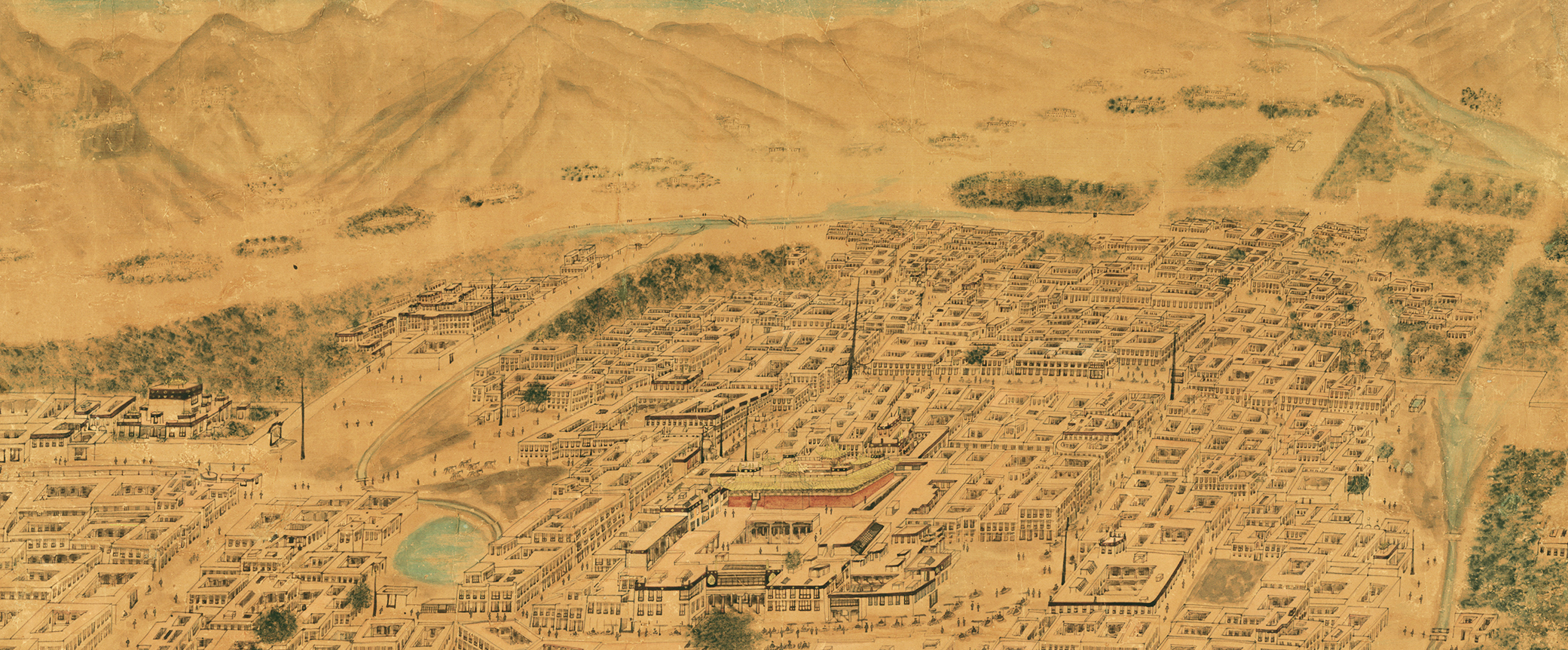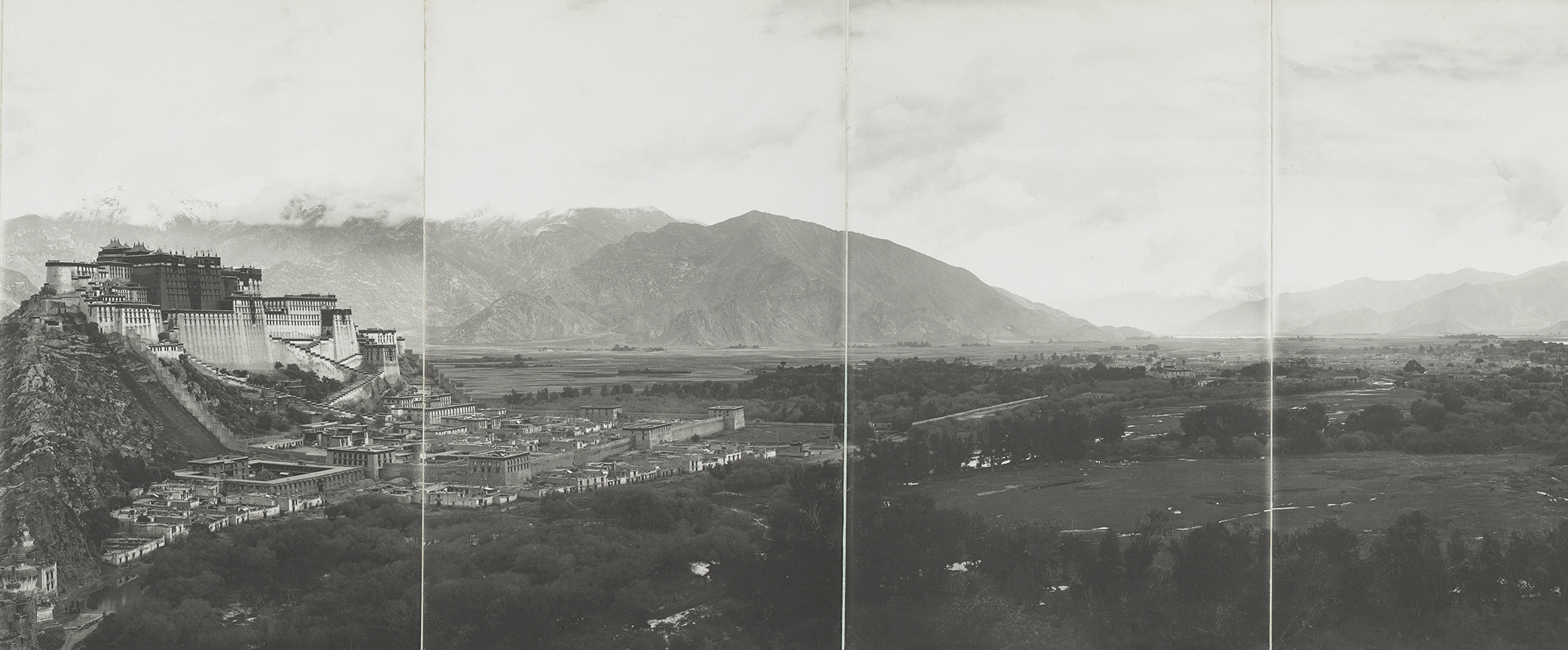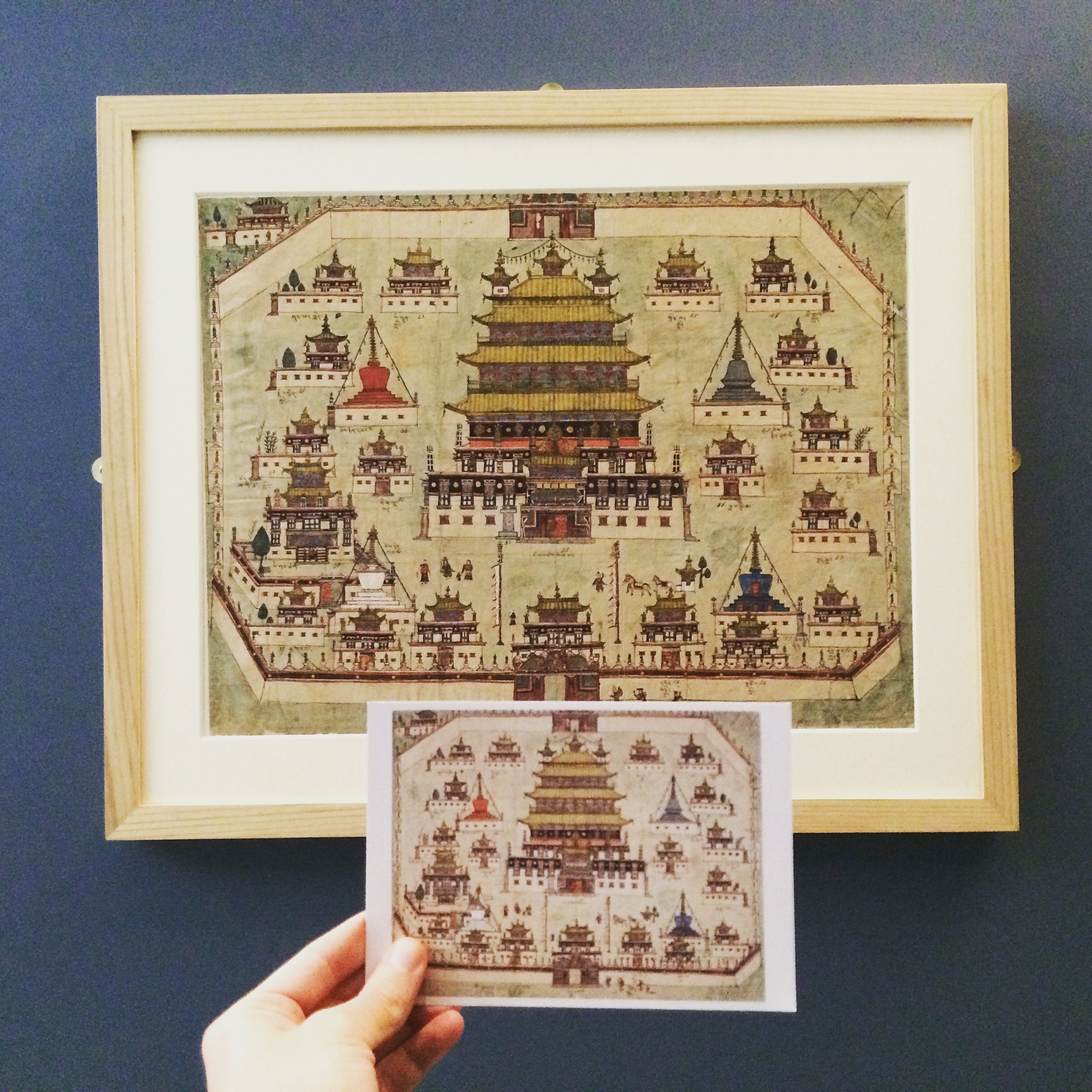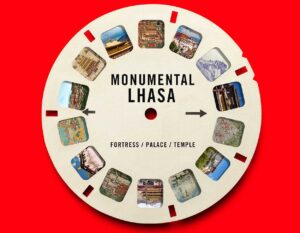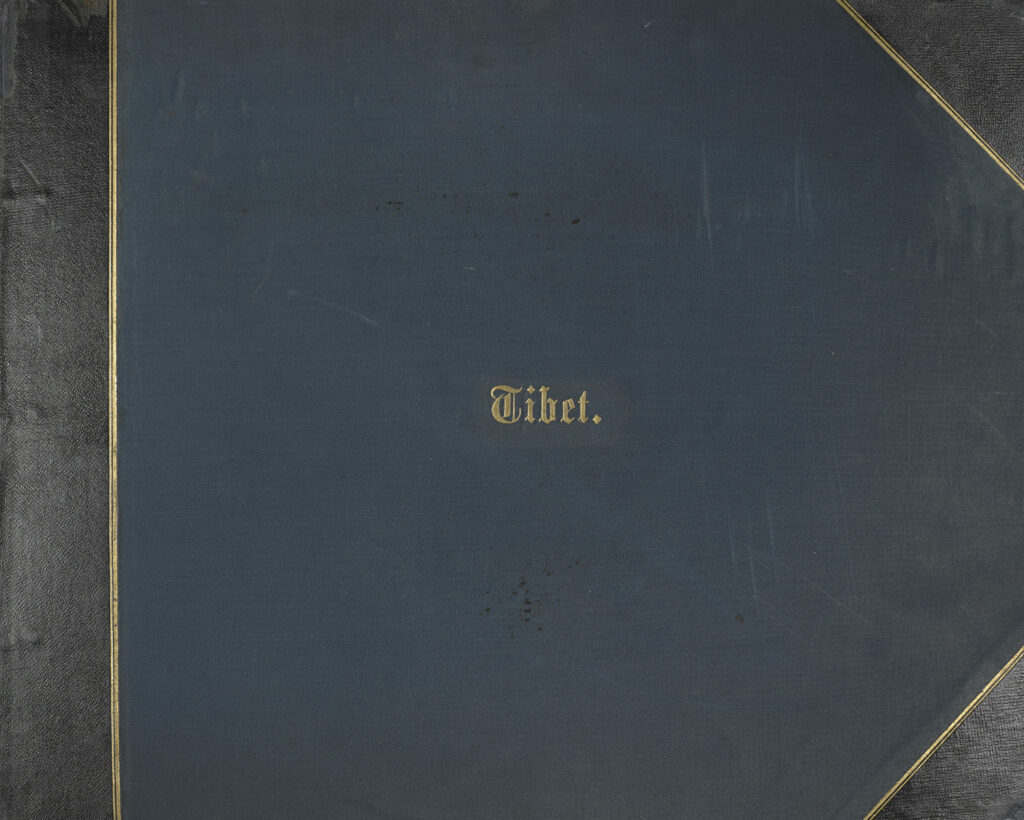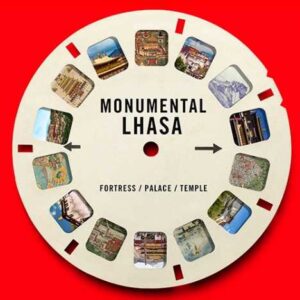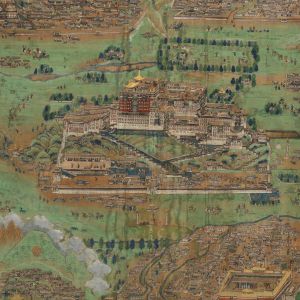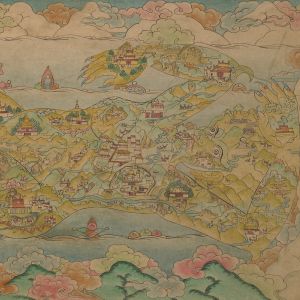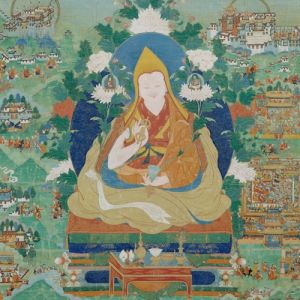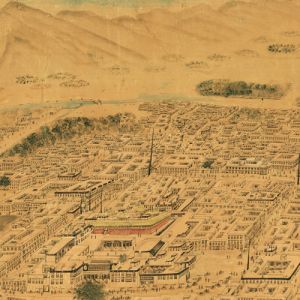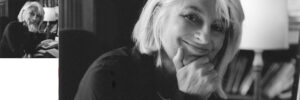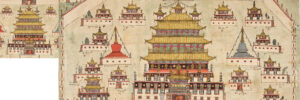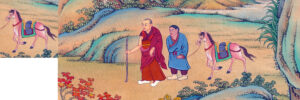
Architectural landmarks act as anchors for the identity of a place as well as focal points for associated stories and memories. Much like the Eiffel Tower is the pervasive symbol of France and the Statue of Liberty represents New York City, beginning in the seventeenth century, key Tibetan monuments became powerful visual icons of Lhasa, the holy capital of Tibet.
Monumental Lhasa: Fortress, Palace, Temple is the first exhibition of its kind to explore rare images of central Tibet’s most iconic monuments as they were seen by Tibetans and Westerners prior to the mid-twentieth century. The exhibition explores how image-making relates to placemaking and how the production and transmission of images contributes to the iconic character, familiarity, and power of important landmarks.
By bringing objects from the Rubin Museum together with art from public and private collections across Europe and North America, this exhibition presents a distinct genre, encompassing paintings, photographs, drawings, and film. The exhibition revives one of the original functions of these images—to transmit the holy city of Lhasa to a remote audience. In Monumental Lhasa Rubin visitors are able to vicariously visit and experience the main architectural sites of Tibet through historical and contemporary eyes.
Curated by Natasha Kimmet
Support for this exhibition is provided by the Ellen Bayard Weedon Foundation, Tulku Tsultrim Pelgyi, and by contributors to the 2016 Exhibitions Fund. Additional support is provided by public funds from the New York City Department of Cultural Affairs in partnership with the City Council.

Image Credits
The Demoness of Tibet; Tibet; late 19th”“early 20th century; pigments on cloth; Rubin Museum of Art; C2006.1.1 (HAR 65719)
Perspective Map of Lhasa; Lhasa, Tibet; early 20th century (pre-1912); ink, watercolor, and gold leaf on rice paper; Collection of Knud Larsen; L179.4.1
John Claude White (British, 1853″“1918); Lhasa Panorama; Lhasa, Tibet; 1904; six fold-out platinum prints taped together and mounted in album; The British Library, Photo 430/53 (89); Photograph © The British Library Board
View-Master Reel (details, clockwise from left): Ganden Monastery, Pixabay | Samye Monastery, The British Library, Add.Or.3017, folio 3 | Jokhang Temple, Antoine Taveneaux, 2008 | Samye Monastery, The Newark Museum, Purchase 1920 | Potala Palace, Antoine Taveneaux, 2010 | Potala Palace, The British Library, WD1216 | Tashilhunpo Monastery, Pixabay
Additional image credits from calendar view (details, clockwise from far right): Drepung Monastery, Royal Museums of Art and History, Brussels, Ver. 350 | Potala Palace, © David Bickerstaff, 2015 | Potala Palace, Anthony and Marie Laure Aris | Samye Monastery, © David Bickerstaff, 2015 | Potala Palace, Royal Museums of Art and History, Brussels, Ver. 349 | Sera Monastery, Antoine Taveneaux, 2009 | The Demoness of Tibet, Rubin Museum of Art, C2006.1.1

